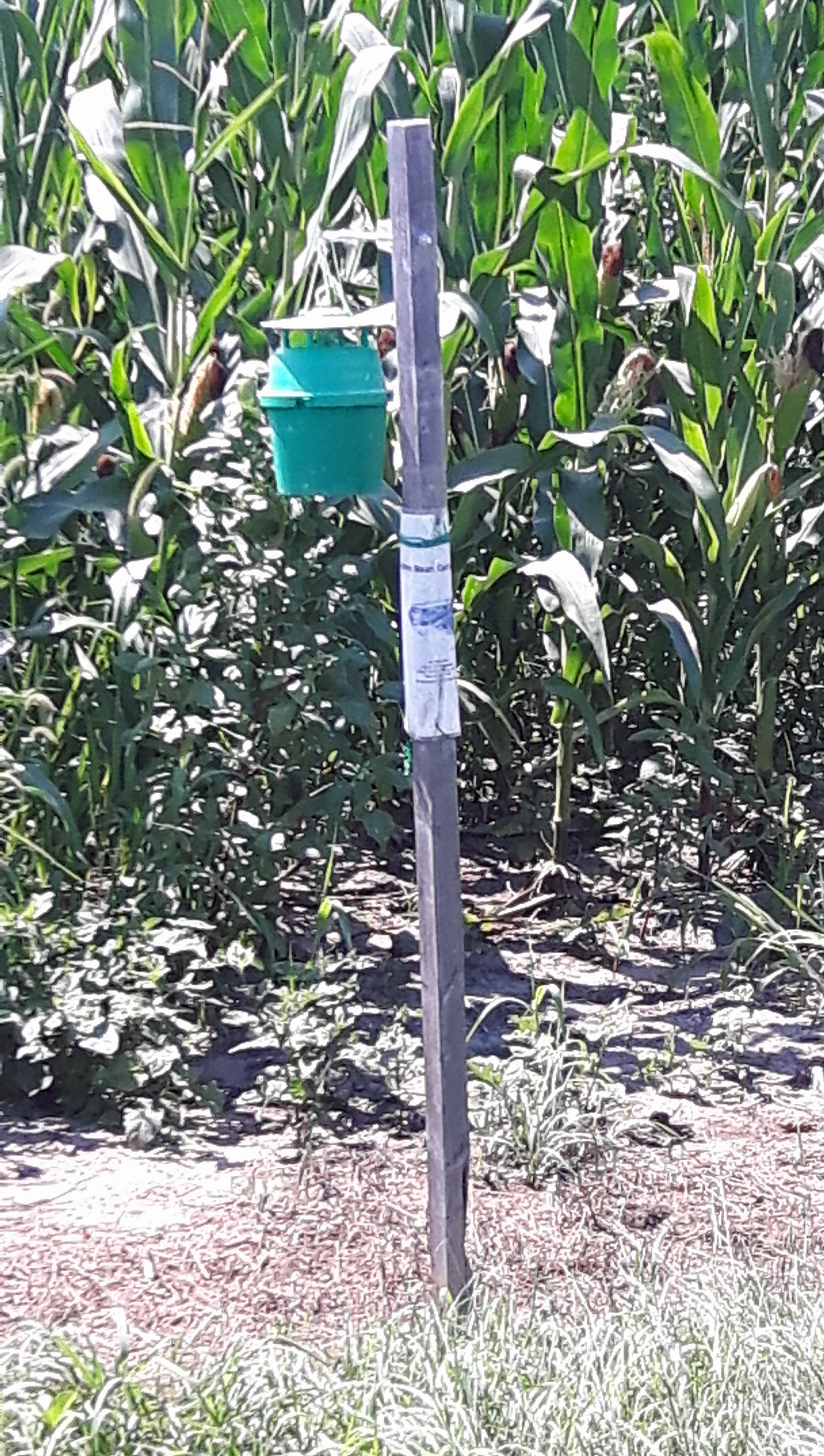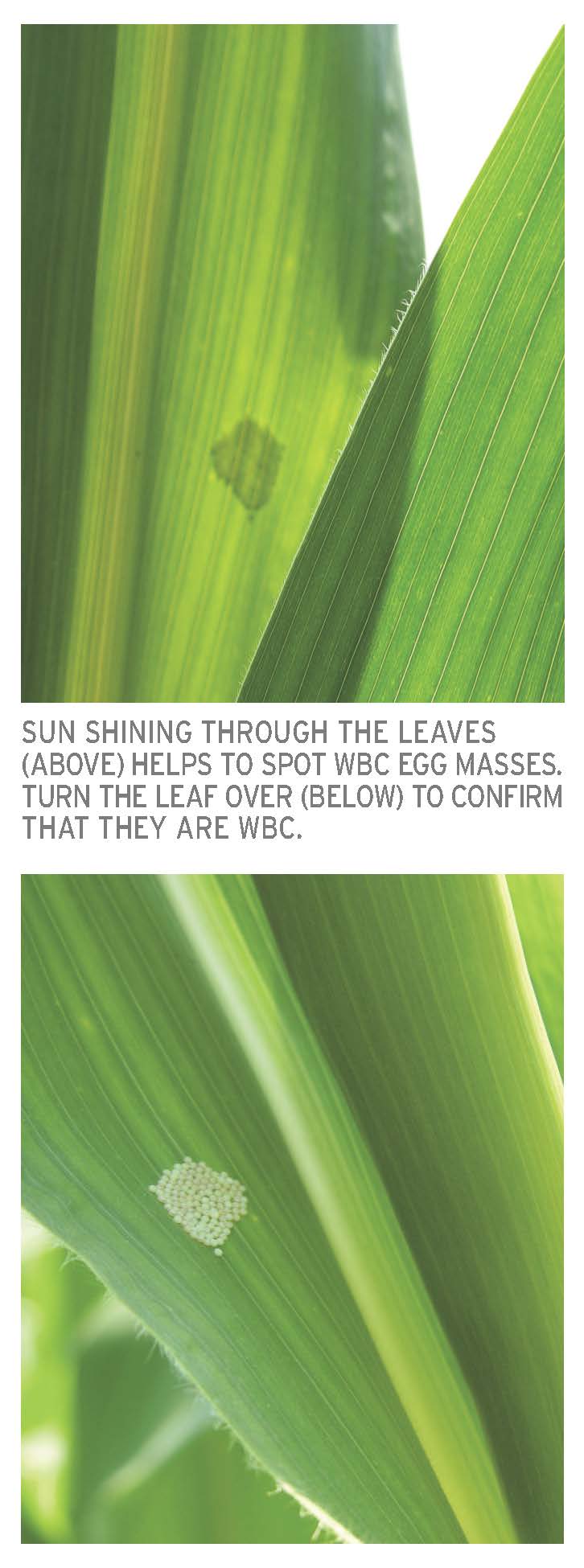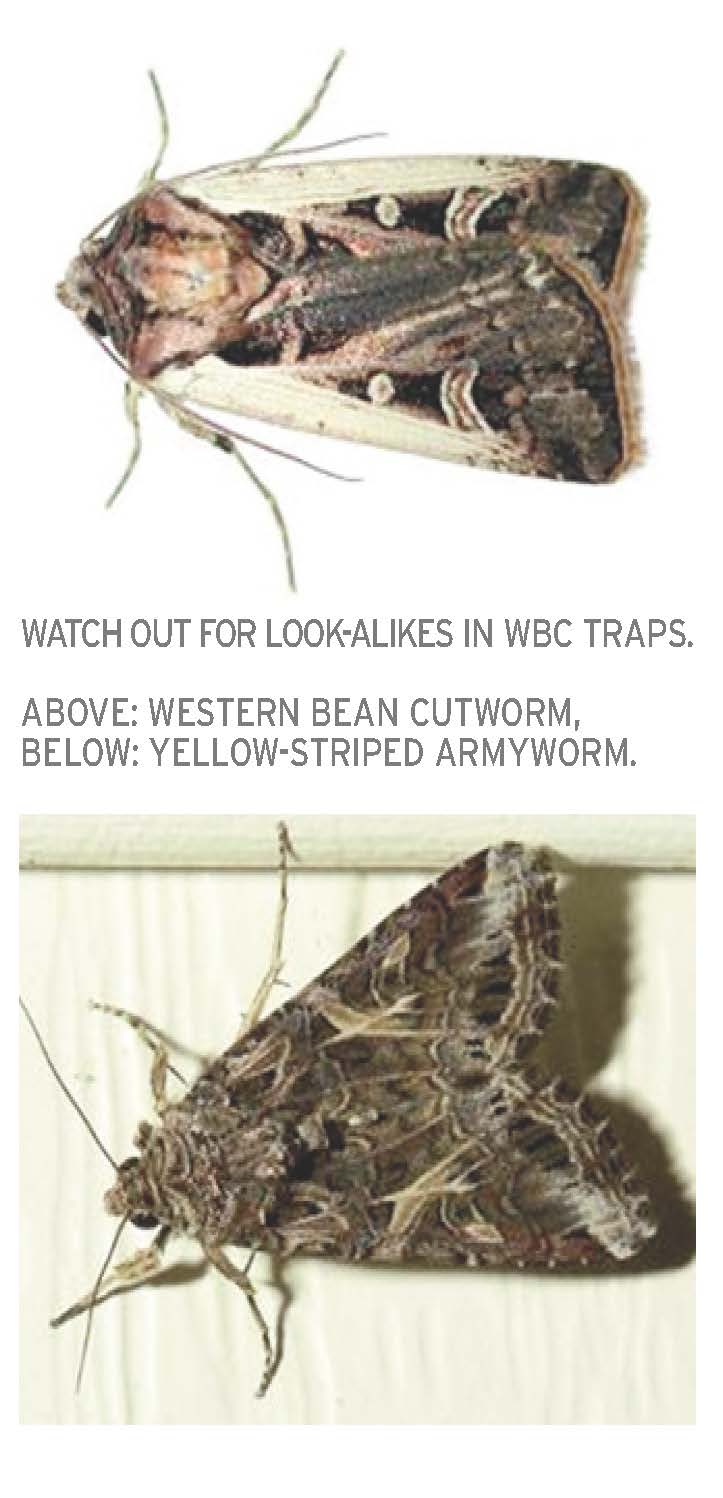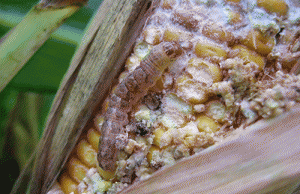WBC 101: ID and control
SCOUTING AND MANAGEMENT IN FIELD CORN

NATIVE TO NORTH America, the Western bean cutworm (WBC), Striacosta albicosta, has been a long-time resident of the U.S. Great Plains region until it began expanding its range eastward and was first detected in Ontario in 2008. Overwintering populations have established here and WBC has become one of the most significant management challenges for Ontario corn producers.

DAMAGE
WBC larvae initially feed on silk and tip kernels but will also feed farther down the ear from within and outside the husk. WBC larvae are very mobile and may disperse from their original plant to a number of plants up and across the corn rows. Multiple larvae can feed within the same ear. Birds may also damage ears by feeding on WBC larvae.
Yield loss due to infestation of one WBC larva/ear has been estimated to reach 15 bu/ac. In Ontario, the risk of WBC injury leading to increased mycotoxin development in grain is of greater importance than yield loss.
Fields with sandy soil located between Thamesville and Strathroy, and Tillsonburg to Simcoe experience economic injury every year. However, WBC infestations are not limited to these regions and can occur in any suitable field in Ontario. High-risk fields are those in the late whorl to early-tassel stage that coincide with peak moth flight (mid-late July). Fields with variable crop stage and plant height are ideal for prolonged egg laying within the same field as they may be attractive to moths over a long time period. Once the crop is in the late tassel/pollination stage or beyond, moths prefer to lay their eggs in dry beans or late-planted corn fields.
SCOUTING GUIDELINES IN CORN
Pheromone trapping
Pheromone traps are used to monitor moth activity and detect peak flight. Traps also determine if WBC are active outside of the known hotspots in Ontario. Trap counts are not used to determine when to spray, but identify fields at risk and when scouting is required. Peak flight in Ontario typically occurs the last week of July but can be one week earlier or later depending on weather and other factors. Migratory moths from nearby states (e.g. Michigan) can be captured in traps in Ontario as early as the first week of June. Moths are mostly active at night, searching for mates and nectar to feed. Peak egg laying follows shortly after peak flight. Egg laying can occur in Ontario anytime from mid-June to the end of August.
Traps should be monitored at least weekly in early July until late August. Ensure that the moths counted each week are WBC as other moths, such as large yellow underwing moths or yellow-striped armyworm, are also attracted to these traps. Green bucket or universal traps (uni-traps) are preferred for WBC (Figure 4). Milk jug traps are more labour intensive, often drying out of their antifreeze in hot weather, rendering the trap useless.
FIGURE 4: GREEN BUCKET TRAP USED FOR WBC MONITORING.

One trap per field is recommended. Mount the trap to hang from a stake four feet above the ground. Each trap will need five WBC pheromone lures (one for every three weeks of monitoring) and one to two insecticide vapour strips per season. The lure is placed inside the small cage area suspended below the trap lid. Lures must be stored in the freezer and changed every three weeks. Discard old lures off site away from the trap. Plastic vapour strips impregnated with insecticide are placed in the bottom of the trap to kill moths so they don’t escape when the trap is opened. One strip will last for two months. Use gloves when handling the lures and vapour strips.
Position the trap along the edge of the field on the prevailing wind side. This will help carry the pheromone plume into the field being monitored and give a better indication of moth activity.
Trap participants are encouraged to join the WBC Trap Network at www.cornpest.ca and provide weekly trap counts during the season. Interactive maps are created weekly to identify areas at risk that require scouting.
Trap supplies can be purchased from supply companies listed on the WBC Trap Network website.
Weekly maps can be found at OMAFRA’s AgMaps site at: http://ontarioca11.maps.arcgis.com/apps/MapSeries/index.html?appid=66f543e8df17462cb6eae35aa04c0341.
SCOUTING
• Begin scouting in mid-July.
• Scout 100 plants (20 plants in five areas of the field) every five days from mid July to mid August, particularly when the crop is in the pre-tassel to full tassel stages.
• Focus on the top three to four leaves. Look for egg masses or larvae on the upper leaf surface and on the tassel. Use the sun to your advantage and look for shadows of egg masses through the leaves (Figure 5).
• Scout fields in the pre-tassel stage first.
• Late-planted corn is low risk early in the season; without tassel tissue to feed on, the majority of larvae will die.
• Early-planted corn that has tasseled before moth flight may still be attractive if pre-tassel corn or dry beans are not nearby.
• Pay close attention to fields with variable plant height and crop stage.

ACTION THRESHOLD FOR CORN
Use cumulative counts to determine if threshold has been reached. To avoid yield loss, spray when there is an accumulation of five per cent of the plants with egg masses or larvae over a two to three week period. Target newly hatched or young larvae before they enter the silks. This gives a spray window of approximately five to seven days, post hatching. Time application according to when more than 50% of eggs have hatched.
To reduce the risk of quality concerns from mycotoxins, the threshold should be lowered if conditions are ideal for ear mould development. Though research has not yet determined what threshold should be followed for mycotoxin risk, use a threshold of one to two per cent of plants with egg masses as a guideline.

Tracey Baute is the field crop entomologist with the Ontario Ministry of Agriculture, Food and Rural Affairs based in Ridgetown. Dr. Art Schaafsma is a field crop pest management professor at the University of Guelph Ridgetown Campus. Jocelyn Smith is the program lead insect resistance management, and field crop pest management at the University of Guelph Ridgetown Campus.
MANAGEMENT STRATEGIES
Bt-corn
• Only hybrids containing Vip3A Bt provide protection against WBC damage.
• Prioritize hybrid selection based on tolerance to ear rot pathogens (e.g. Fusarium) and mycotoxins.
• WBC in Ontario are not controlled by Cry1F hybrids.
• Scout all non-Vip3A hybrids and spray if threshold is reached.
• All Bt-corn fields are at risk of resistance development by WBC. Scout and report unexpected damage by WBC in Vip3A fields.
Insecticides
• Several foliar insecticides are registered for WBC control in corn.
• Insecticide timing is critical. Target application to coincide with the majority of egg hatch. Once larvae enter the ear, insecticides are no longer effective.
• Repeated use of the same insecticide year after year increases the risk of resistance development by WBC. To reduce the risk of resistance, rotate between chemical families for each application and each year.
• Follow label restrictions regarding application timing to protect pollinators. Avoid spraying insecticides at tassel during bee flight times.
• Follow buffer zone requirements to minimize spray drift in pollinator and beneficial habitats close to the application site.
• Several natural enemies feed on WBC egg masses and young larvae, including lady beetles, lacewing larvae, and others.
Insecticides and Fungicides
• Fungicides targeting Fusarium infection do not protect from WBC damage.
• Insecticide and fungicide tank-mixes should be applied to target the R1 stage (full silk emergence, before silk browning) and when the majority of WBC egg masses are hatching. Application at R2 may be too late for effective WBC control.
• Always check the product labels for information on compatibility. •

























